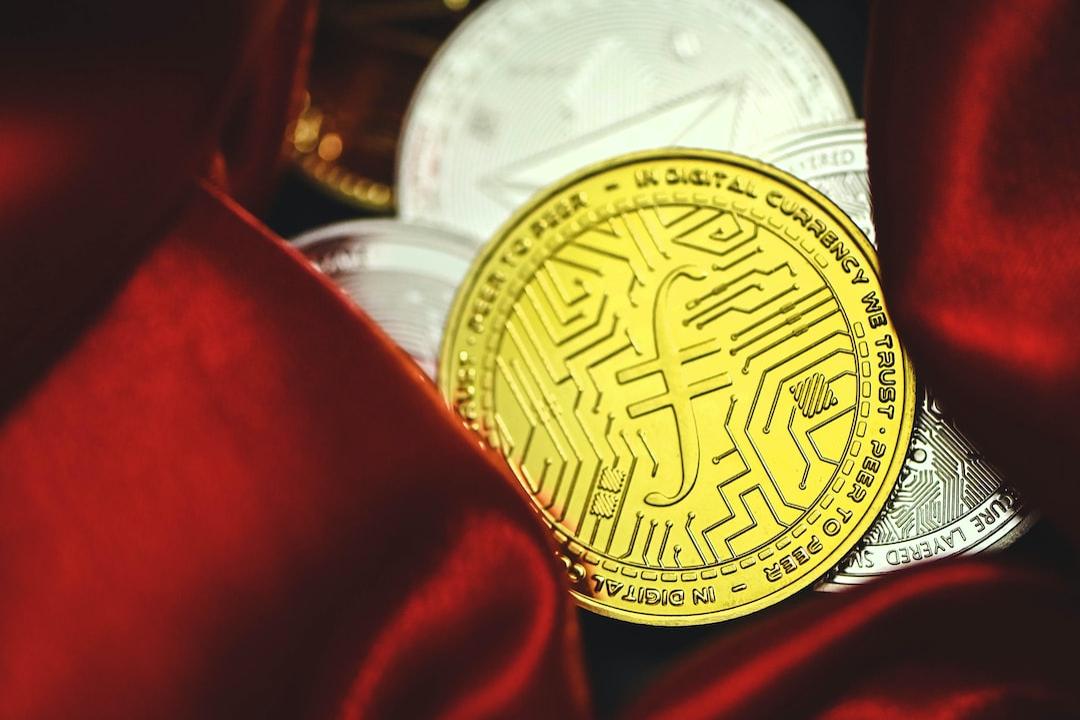As one of the fastest fields for influence monetization, for ordinary retail investors in the deep Web3 world, the ability to timely pay attention to the product endorsement tweets of various Alpha bloggers and KOLs has almost become an essential skill for tracking the code of wealth. So, who is the most influential “product endorsement” king in the current crypto world? Although the KOL endorsement effect chart below may not be rigorous, placing Vitalik Buterin in a unique position can be considered accurate – as the absolute authority figure in the Ethereum ecosystem, Vitalik, although rarely directly “endorsing products,” every word and deed of his “open cards” and “hidden milk” actions will have a tremendous driving effect on the market.
Recent examples of soaring ENS due to Vitalik’s call for action are typical evidence. Therefore, this article aims to list the development and current status of projects/technical directions that Vitalik has “endorsed” in the past and attempt to summarize the reasons behind them and how they have influenced and shaped the Ethereum we see today.
01 Open endorsement of ENS:
It is not an exaggeration to say that Vitalik “favors” ENS. He publicly stated in an interview, “The Ethereum Name Service ENS is the most successful non-financial Ethereum application to date.” As we all know, ENS, launched in 2017, is the Ethereum Name Service based on Ethereum, a distributed domain name service that allows any user to register an Ethereum address (or multiple) with a “.eth” ending through its unique bidding mechanism. In simple terms, ENS can map a lengthy and hard-to-remember “0x starting Ethereum address” to a custom short address, such as satoshi.eth, vitalik.eth, etc. In wallets that support ENS, users no longer need to copy and paste long addresses but can directly use ENS domain names to bind various cryptocurrency addresses and receive cryptocurrency payments. Vitalik’s Twitter account nickname has always been “vitalik.eth,” which is equivalent to giving free long-term advertising to ENS and indirectly showing his support for ENS.
Since the first half of this year, Vitalik has directly endorsed ENS several times, causing a visible and significant stimulation of ENS prices in the secondary market:
Firstly, on January 3, Vitalik retweeted ENS’s layer2 data resolution solution and posted, “All L2s should run on the CCIP resolver so we can directly register, update, and read ENS subdomains on L2. ENS is very important and needs to be affordable.” Subsequently, ENS surged over 30% in 5 minutes, breaking through 12 USDT. On May 21, Vitalik and ENS once again staged a dramatic “endorsement” performance—due to Vitalik’s discussion with others regarding sorters & intent, he gave examples of his views on cross L2 standards/infrastructure, emphasizing “Key changes to Token transfers, ENS, and smart contract wallets (personal and organizational)” among other things. Since January 3, ENS has risen from $8 to a high of $30, an increase of nearly 300%.
02 What else has Vitalik “called” for?
In addition to ENS, a long list can be drawn up of projects/technical directions that Vitalik has historically “endorsed.”
Plasma:
First and foremost is Plasma, as the Ethereum scaling solution that Vitalik once highly recommended, it is now rarely mentioned, and most new users have never heard of it. In August 2017, Vitalik and Joseph Poon jointly released the initial concept of Plasma—an off-chain scaling solution that essentially separates data and computations (excluding deposits, withdrawals, and Merkle roots) from the Ethereum main chain and executes them off-chain, while periodically storing some key operating state data on the main chain to ensure final security. However, since Plasma cannot solve data withholding issues and is not conducive to migrating contract states to L1, it has ultimately been replaced by the new Ethereum scaling route represented by Rollup, which is almost the only mainstream option for Ethereum scaling today. However, it is worth noting that as Rollup heavily depends on data availability on the main chain, and Plasma completely bypasses data availability issues and greatly reduces transaction fees, interest in Plasma is starting to revive. Towards the end of last year, Vitalik Buterin published articles such as “Exit games for EVM validiums: the return of Plasma,” viewing Plasma as a method to improve chain scalability using validity proofs like zkSync and StarkNet. This has led people to re-examine Plasma’s ability to minimize data availability restrictions to the maximum extent, and it is expected that Plasma may play a significant role in improving Ethereum network performance in the future.
RAI:
In the stablecoin field, Vitalik once wrote specifically about his views on stablecoin design, categorizing it into three different categories: centralized stablecoins, DAO governance real-world asset-backed stablecoins, and governance-minimized cryptocurrency-backed stablecoins. The first two are represented by USDT/USDC and DAI, while he elaborated on the RAI model as a key component of building an on-chain identity system, believing that “blockchains are valuable for identity applications because they are independent of institutions.” In addition to ENS, SIWE, POAP, and SBT are also considered by Vitalik as key components for building an on-chain identity system:
Sign In With Ethereum (SIWE) standard allows Web3 users to log in to (traditional) websites based on on-chain accounts; POAP is used to issue tokens representing proof; and especially through the article “Decentralized Society: Seeking the Soul of Web3,” Vitalik has gradually brought Soul Bonding Token SBT into more people’s view, becoming an actual carrier of Web3 digital identity – SBT can further prove results while deliberating on-chain traces, recording participation processes, and possessing permanent and non-transferable token attributes, laying the foundation for building a complete Web3 identity system. From this perspective, Soul Bonding Token…SBT’s core mission is to establish a native Web3 identity system for every user, enabling broader applications beyond DeFi and NFTs. However, amidst the decline of the Web3 social trend, SBT remains a representative credential for decentralized identities, yet to achieve widespread adoption on-chain.
DVT
In December 2023, Vitalik discussed managing the vast signing load on the Ethereum network without sacrificing decentralization, proposing DVT (Distributed Verifier Technology) for decentralized staking pools. Since November 2023, Lido has been experimenting with DVT to establish a distributed validator network supported by Obol Network and SSV Network.
Loopring/Taiko
As an early representative of Rollup solutions, Loopring’s approach has received praise from Vitalik for enhancing transaction performance. Combined with sharding, it theoretically scales Ethereum’s network into thousands of “islands,” potentially achieving 160,000 transactions per second. Taiko, closely associated with Loopring and newly launched on the mainnet, was recently endorsed by Vitalik on May 25th, as the first Based Rollup platform.

Farcaster
In September 2023, Vitalik’s X account was hacked, leading to losses exceeding $690,000 through a phishing link for a ConsenSys Proto Danksharding NFT giveaway. Vitalik confirmed his Twitter account was SIM swapped during the registration for Twitter Blue, prompting him to uninstall Twitter and join Farcaster, where account recovery is possible through an Ethereum address. As of the latest update, Vitalik has been active on Farcaster with over 10 posts in the past week, contrasting with no activity on X since June 11th.

Behind the Ethereum “Orthodoxy” Struggle
Vitalik, a pivotal figure in the Ethereum ecosystem, influences Web3 significantly. His endorsements serve to maintain Ethereum’s orthodoxy and ensure its development aligns with his vision of decentralization and mass adoption. Projects like ENS, Plasma, and Taiko illustrate his efforts to define Ethereum’s path forward, emphasizing the integration of ENS L2 data resolution solutions exclusively on Ethereum’s mainnet.
ENS, a critical component of Ethereum’s identity system, highlights the cost of choosing third-party DA platforms over Ethereum’s mainnet for L2 networks. This standard strengthens Ethereum’s economic appeal by enhancing the opportunity costs of using third-party DAs. Similarly, Plasma’s integration with ZK zero-knowledge proofs on the main chain validates Plasma blocks, reducing reliance on exit mechanisms.
Taiko’s role as the first Based Rollup project on Ethereum’s mainnet delegates sorting power and associated revenues to L1, enhancing Ethereum’s economic competitiveness and appeal. Vitalik’s actions reflect his role akin to Ethereum’s substantive “CTO,” guiding its development and governance frameworks, often aligning with his vision.
Conclusion
Vitalik’s influence on Ethereum and broader Web3 initiatives underscores his strategic role in steering Ethereum’s trajectory. His actions aim to secure its position in the decentralized landscape, ensuring it remains on course amid competitive pressures.


